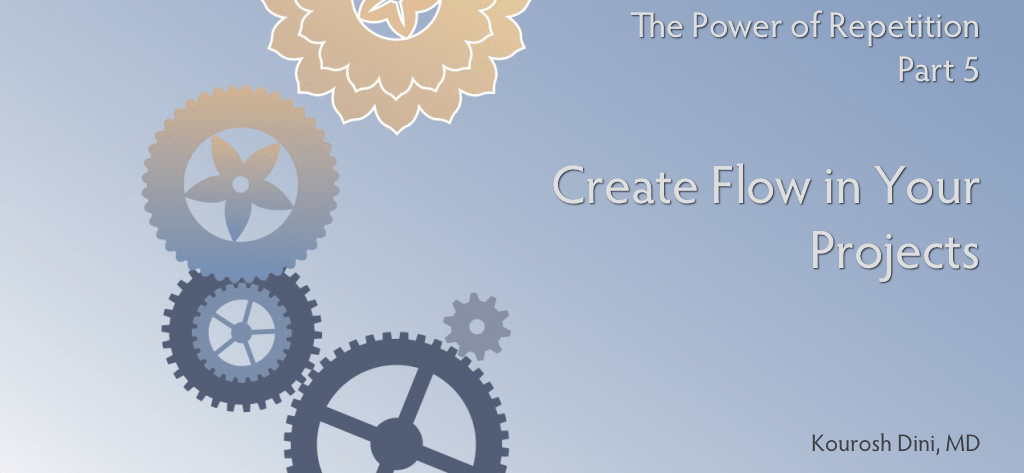This post is Part 5 of 6 of The Power of Repetition Series.
Creating Flow
Repetition can also create flow for one or many projects.
For example, you may want to get better at an instrument. “Practice piano” can be a daily repeated task. Every morning, I go through the process of powering up the instruments and the software to record. I may play for a minute or an hour. I may only sit at the keys and touch them briefly. Regardless, I sit at the keys, if only for a moment.
In this way, I honor the habit. Repetition allows me to optimize the conditions for creativity. I don’t have to perform. I don’t have to do anything other than be there with some regularity. Any amount of work counts as something towards checking off the task.
Clearly a longer period of time or increased frequency allows a greater flow through whatever the project may be. But having some frequency creates the flow in the first place.
In this way, I can pursue multiple projects. In addition to the daily practice, there are papers to write and talks to prepare. As daily repeated tasks, I treat them similarly as the piano practice. I can sit there and type nothing, a sentence, or more. More often than not, once I start, more follows. At some point, I feel “that’s enough for now,” close the program, and check it off the repeating task list.
I really don’t like to work against my will. This method means that the only part where that may happen is showing up.
This is actually a rather powerful way of working. More than two, or maybe, three creative repeated tasks somehow becomes too much. Your mileage may vary. The simple daily reminder to put oneself in the position of creating, establishes a flow in which the creativity and its follow through can proceed.
For a more detailed method including exercises to get you going, consider the Being Productive course.
_________________________________________
The Power of Repetition Series will post weekly. Links will become available as they are published:
- Part 1 – Introduction
- Part 2 – Build and Keep Habits
- Part 3 – Tackle Problem Habits
- Part 4 – Clear Clutter
- Part 5 – Create Flow
- Part 6 – Avoid Deadline Pressures







